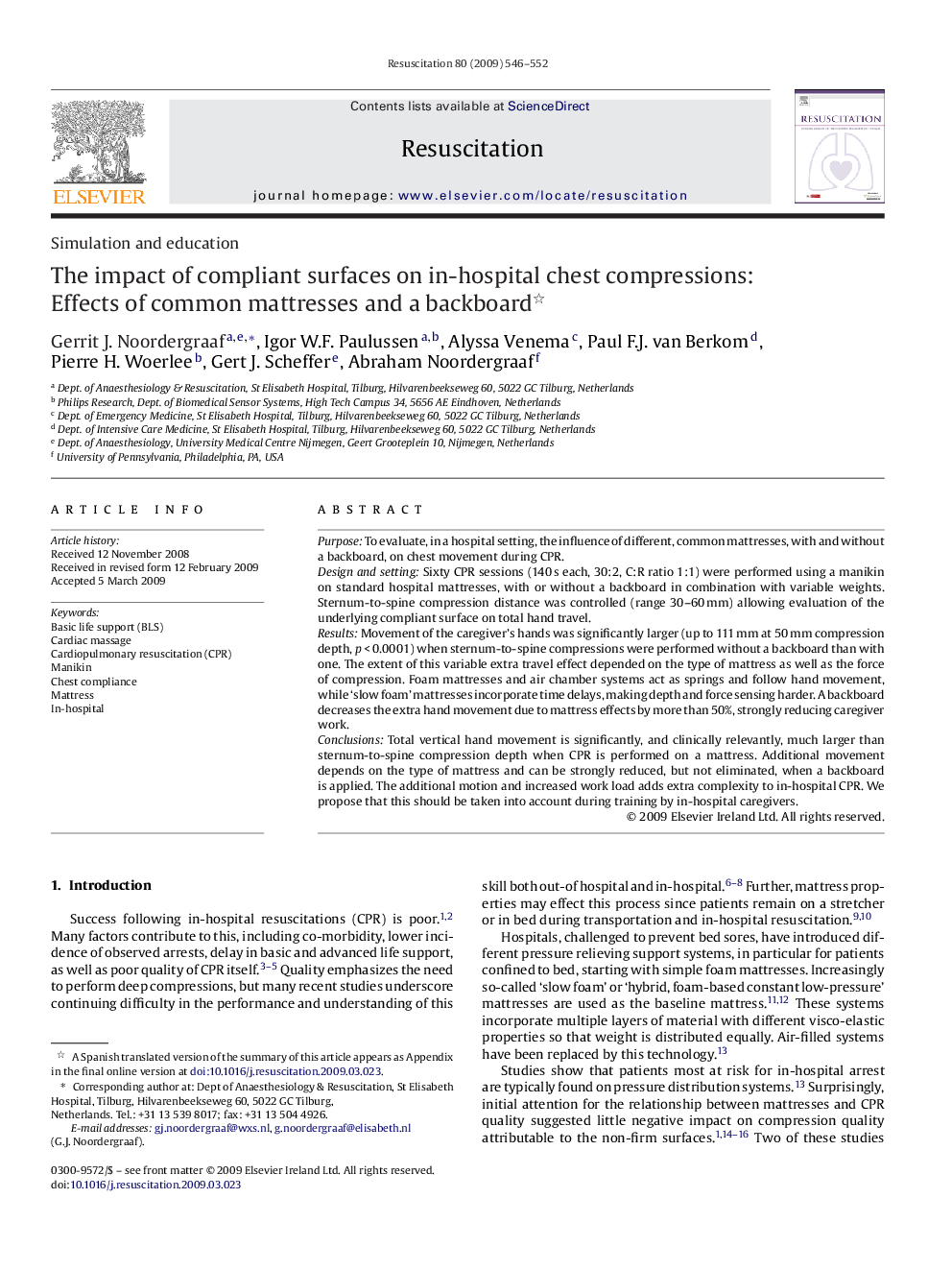| Article ID | Journal | Published Year | Pages | File Type |
|---|---|---|---|---|
| 3011183 | Resuscitation | 2009 | 7 Pages |
PurposeTo evaluate, in a hospital setting, the influence of different, common mattresses, with and without a backboard, on chest movement during CPR.Design and settingSixty CPR sessions (140 s each, 30:2, C:R ratio 1:1) were performed using a manikin on standard hospital mattresses, with or without a backboard in combination with variable weights. Sternum-to-spine compression distance was controlled (range 30–60 mm) allowing evaluation of the underlying compliant surface on total hand travel.ResultsMovement of the caregiver's hands was significantly larger (up to 111 mm at 50 mm compression depth, p < 0.0001) when sternum-to-spine compressions were performed without a backboard than with one. The extent of this variable extra travel effect depended on the type of mattress as well as the force of compression. Foam mattresses and air chamber systems act as springs and follow hand movement, while ‘slow foam’ mattresses incorporate time delays, making depth and force sensing harder. A backboard decreases the extra hand movement due to mattress effects by more than 50%, strongly reducing caregiver work.ConclusionsTotal vertical hand movement is significantly, and clinically relevantly, much larger than sternum-to-spine compression depth when CPR is performed on a mattress. Additional movement depends on the type of mattress and can be strongly reduced, but not eliminated, when a backboard is applied. The additional motion and increased work load adds extra complexity to in-hospital CPR. We propose that this should be taken into account during training by in-hospital caregivers.
